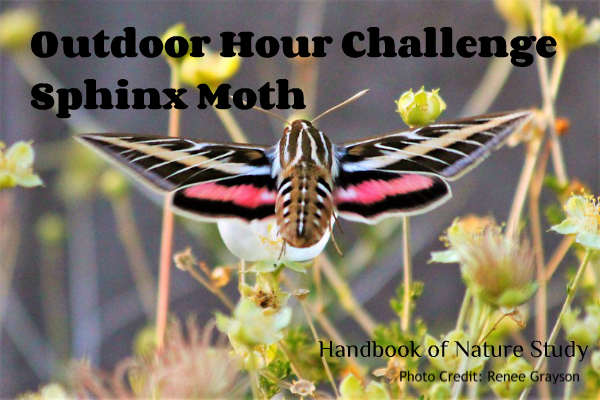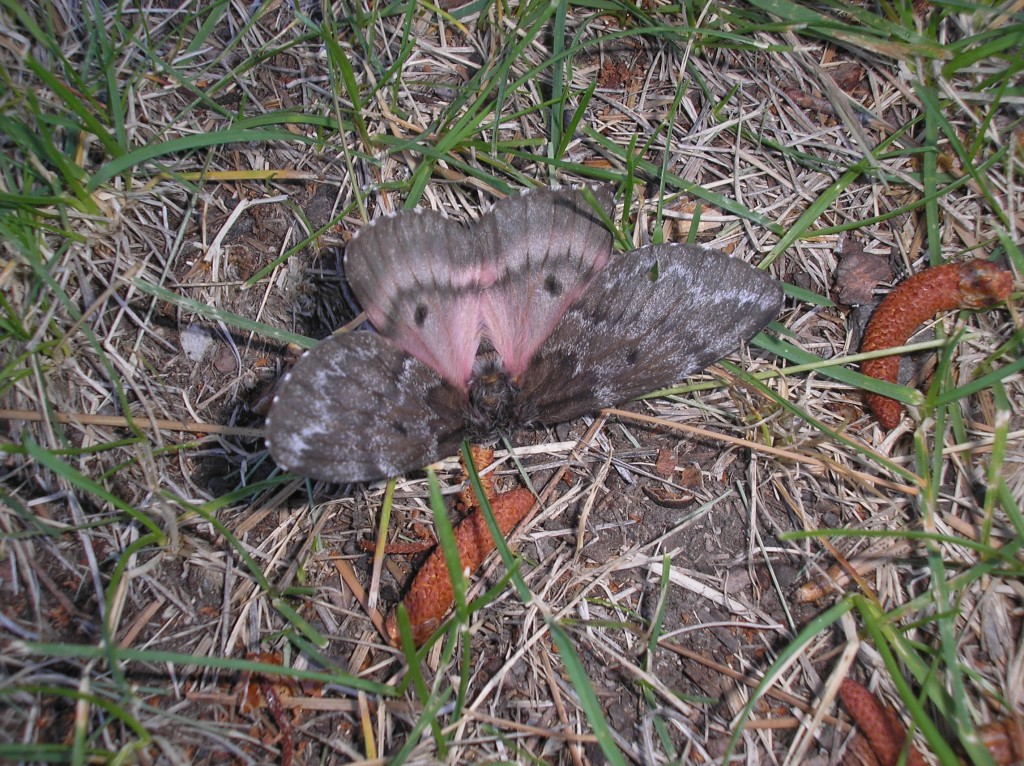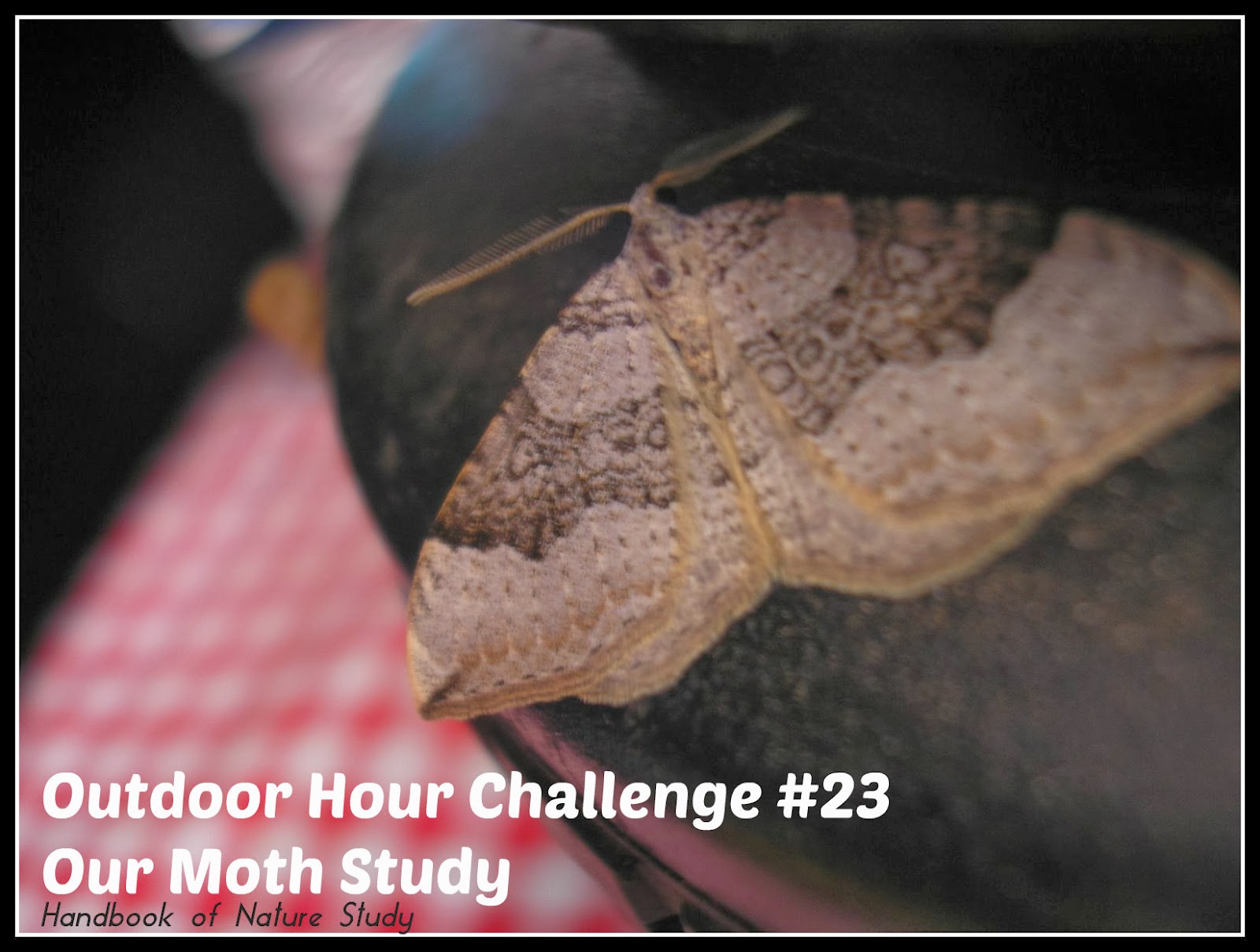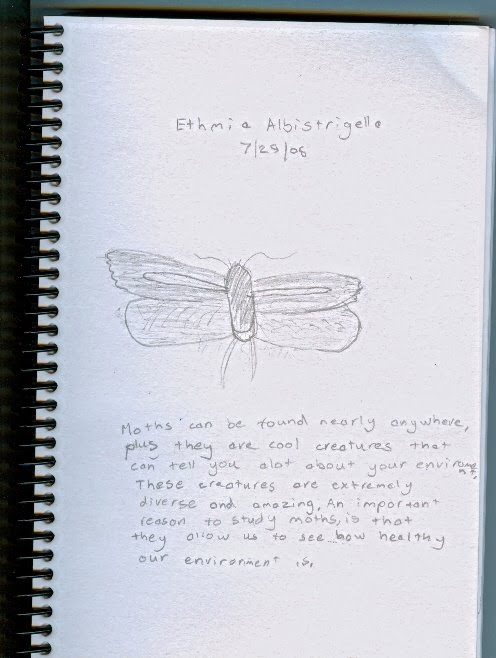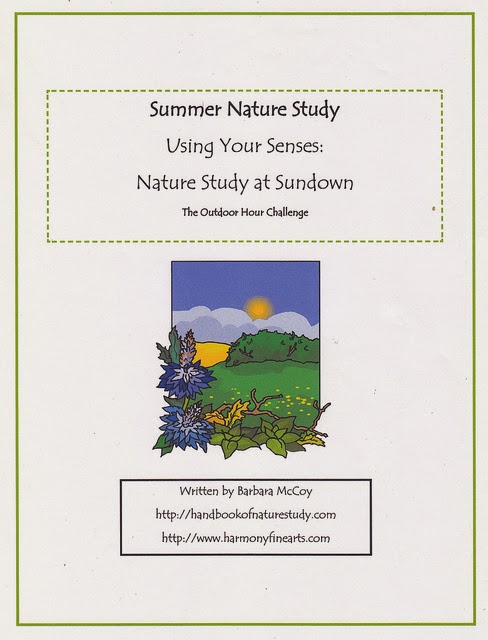The first time I saw a sphinx moth, I thought it was a hummingbird! It flew into my house and started flying around a vase of flowers we had on the kitchen table. It took a minute before I realized that it wasn’t a hummingbird but a very big flying insect. I have since seen several more while at the garden nursery and even in my own yard a few times when we lived in California.
I no longer think of these large flying insects as creepy but I include them in the Creepy Things series of Outdoor Hour Challenges so you can learn to appreciate their beauty too!
Don’t know what a sphinx moth is? Use these ideas to learn more:
- Use an insect field guide to gather facts about the sphinx moth.
- Use this link to learn more about the white lined sphinx moth.
- Read lesson 75 in the Handbook of Nature Study by Anna Botsford Comstock.
See the Creepy Things ebook for more sphinx moth nature study ideas, videos, and printables!
Please note that I will not be posting the complete challenge here on the blog. You’ll find the detailed challenge in the Creepy Things ebook that’s available both in the Ultimate Naturalist and Journey level memberships. Sign into your account and download the ebook for the details, more links, and notebook pages.
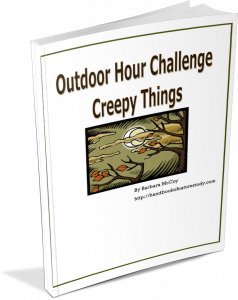
If you don’t have a membership yet, click the graphic above and join today for immediate access to the 26 ebooks and so much more! Remember that all levels, even the Discovery level membership, include access to all of the archived newsletters!
Topics in this ebook include:
- Banana slug
- Tarantula
- Black widow
- Scorpion
- Leech
- Muskrat
- Sphinx moth
- Cicada
- Millipede
- Poison oak

